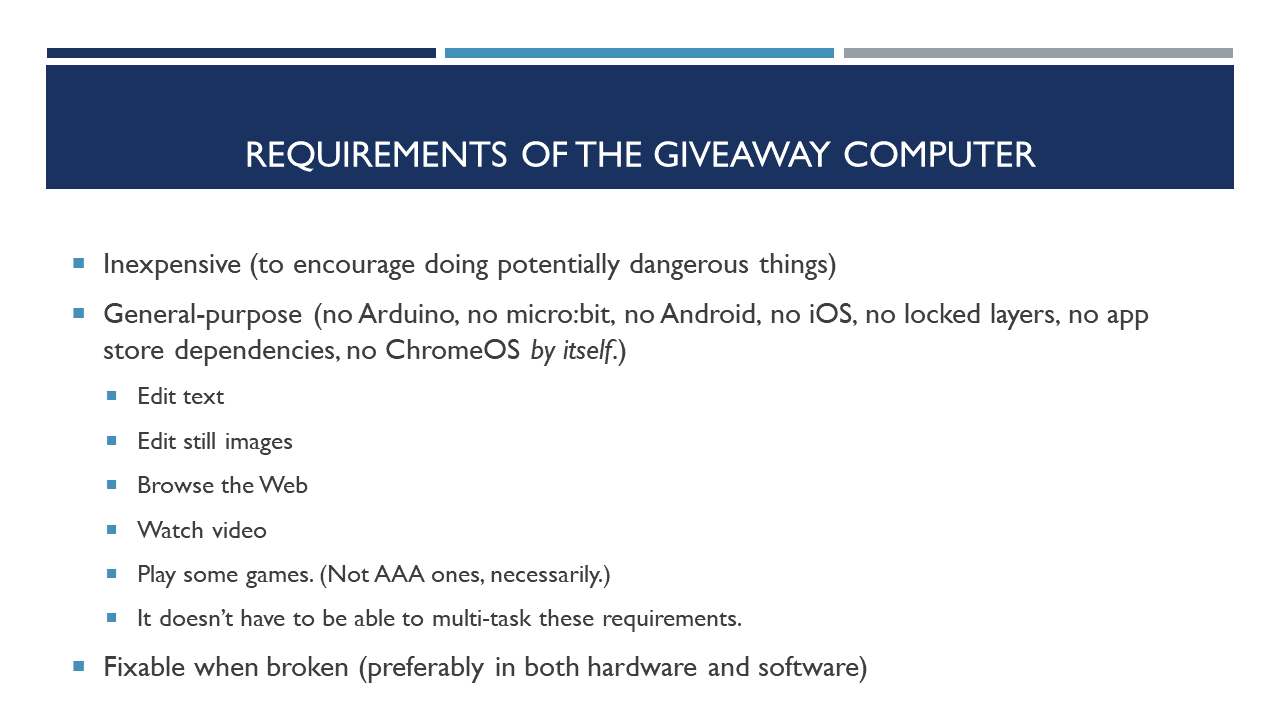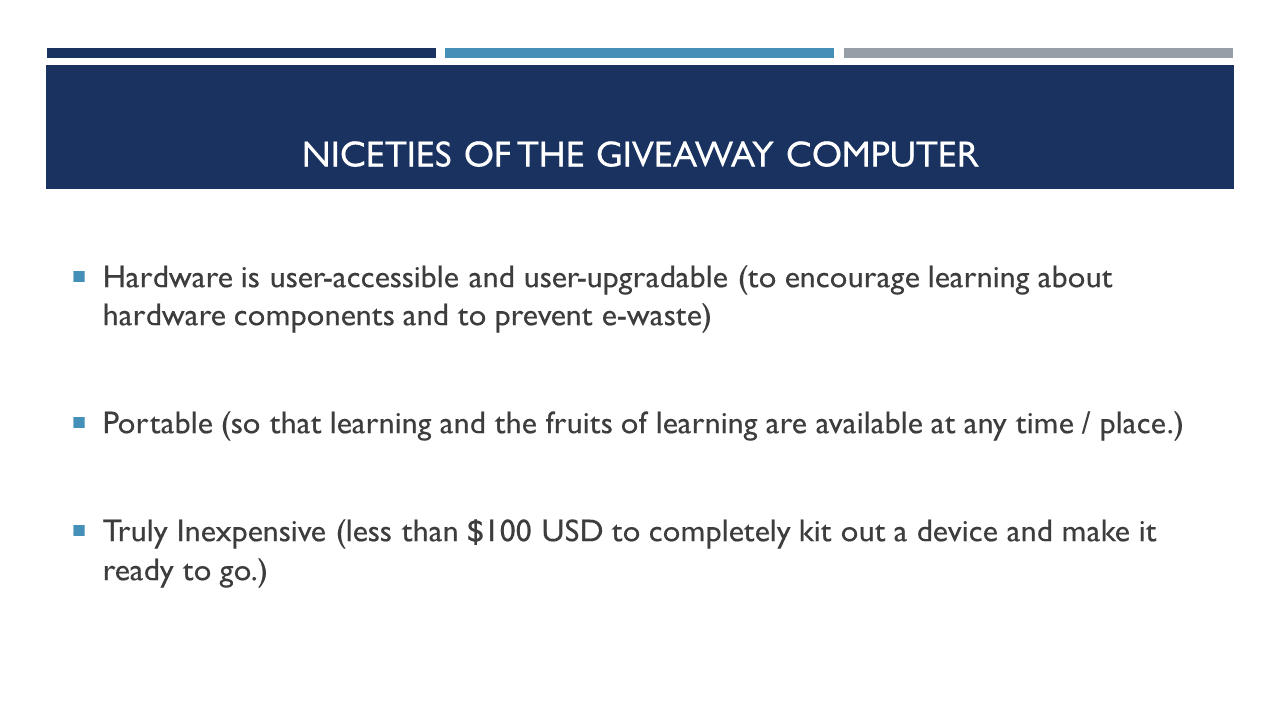
If we were building an ideal give-away computer to solve the problems that we have, for the target audience that we are aiming for, what's non-negotiable about that machine?
- It must be inexpensive.
- Expensive devices are treated more carefully than others, and a significant amount of knowledge about computing, and especially about recovering from errors and difficult situations, is about doing things that are potentially dangerous to the stability of the machine itself. A computer that costs $750, $1500, or even one that costs $300, where that $300 is the result of months of squeezing a budget to afford it, is going to be treated as a precious object instead of a learning device. (Additionally, funders like being able to distribute as many units as they can for grant funding, so the less each unit costs, the more they can give away.)
- It must not be locked in any manner.
- These machines are meant to expand knowledge and encourage experimentation, therefore we must exclude any device that is limited-purpose or that, by design, prevents access to certain parts of the system. We cannot, therefore, give away Arduino, Android, iOS, or other devices with locked layers, dependencies on App Stores, or that can only be used with a limited number of apps. (ChromeOS also fails in this regard, but stick a pin in that, because the devices themselves that ChromeOS runs on may still be useful to our purposes, once we have removed ChromeOS from them.)
- It must be general-purpose.
- This device must be able to perform the basic tasks of a general-purpose computer. It must be able to edit text, edit still images, browse the World Wide Web, watch videos, listen to sounds, and play games. It does not have to be able to multi-task these options, nor does it have to be able to play AAA games or seamlessly encode 8k video at 120 frames per second.
- It must be fixable when it breaks.
- This counts for both hardware and software. The ideal computer can have components swapped out if they fail, software patched if it becomes a security risk or new functions are developed for it, and if everything goes completely pear-shaped, it should be easy to wipe it all out and start again, either fresh or from a backup. By lowering the costs of failure or unwinnable situations, we encourage experimentation and doing potentially dangerous things with big potential payoffs. As well as helping someone learn to diagnose issues, read error messages, and find information and solutions by reading manual pages and other documentation about what they are trying to do.

Beyond the requirements, there are also some thing we would like about this computer that aren't required, but will make all of our goals easier to achieve.
- Hardware is user-accessible and user-upgradable.
- Preventing e-waste is important in this situation, so it would be very nice if the ideal give-away computer not only lets the user access the hardware and see how it's all put together, but allows the user to swap in a new, more powerful component to keep the machine running and on task, or if they come into a little bit of a windfall and decide to spend it on getting their perfectly fine computer able to keep going for a few more years.
- Portable
- We want the ideal give-away computer to be portable, so that users can collaborate with each other on projects, so users can take the machines (and their error messages) to a place with a knowledgeable person so they can see what is going wrong firsthand, and because a lot of users need their computing resources available to them where they are at the moment, rather than having to be at a particular space to engage with their computers.
- Truly inexpensive
- The ideal give-away computer should cost less than $100 USD to fully kit out and be ready for a user to pick up and start using at the point of acquisition. That stretches grant budgets quite a bit, and it allows for people who want to sell such machines at cost, or as part of "buy one, give one" schemes to not price themselves out of their target market or force themselves to rely on the largesse and good will of people to spend more money than they otherwise might so that someone else can also have a necessary piece of technology.